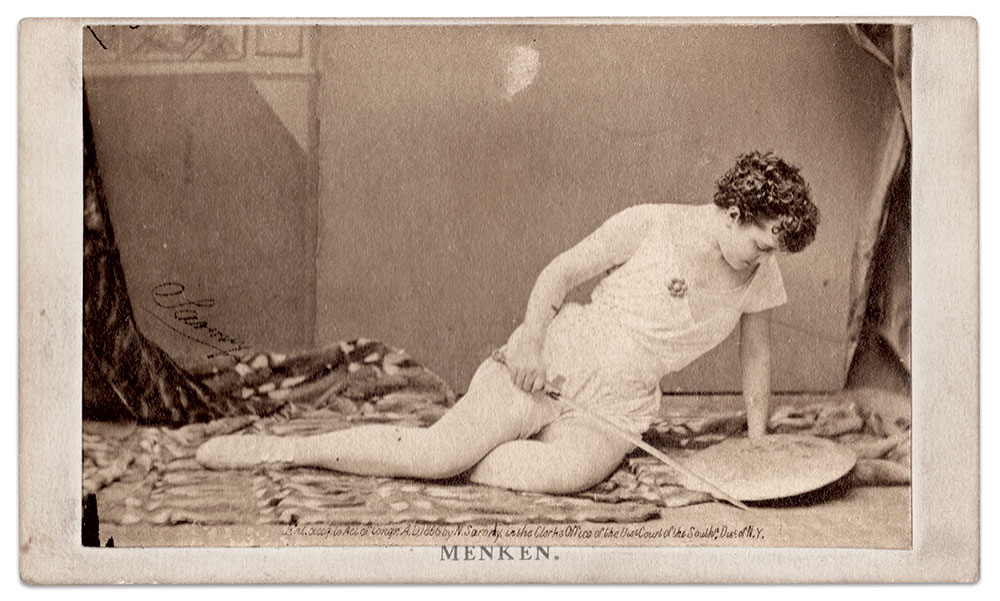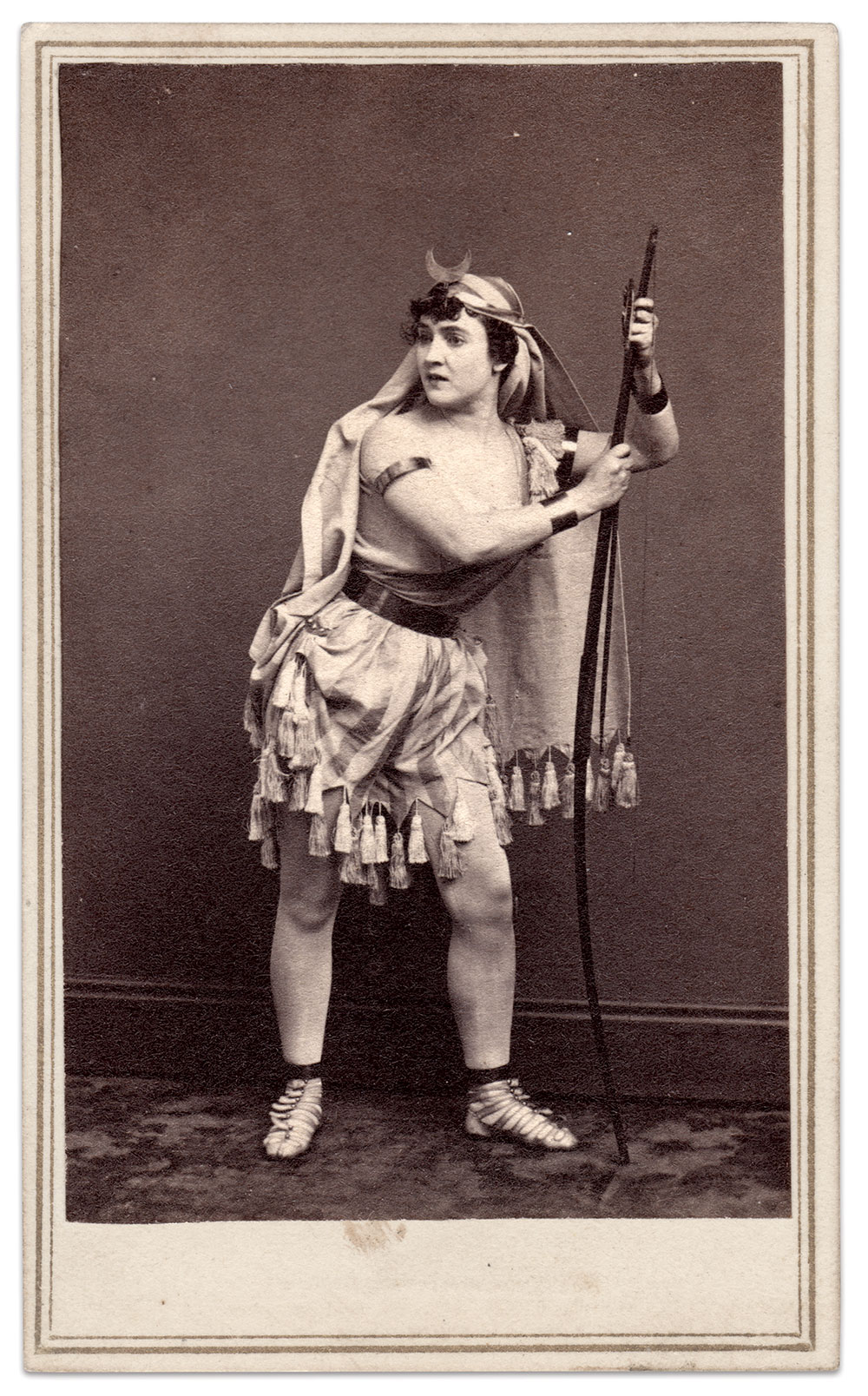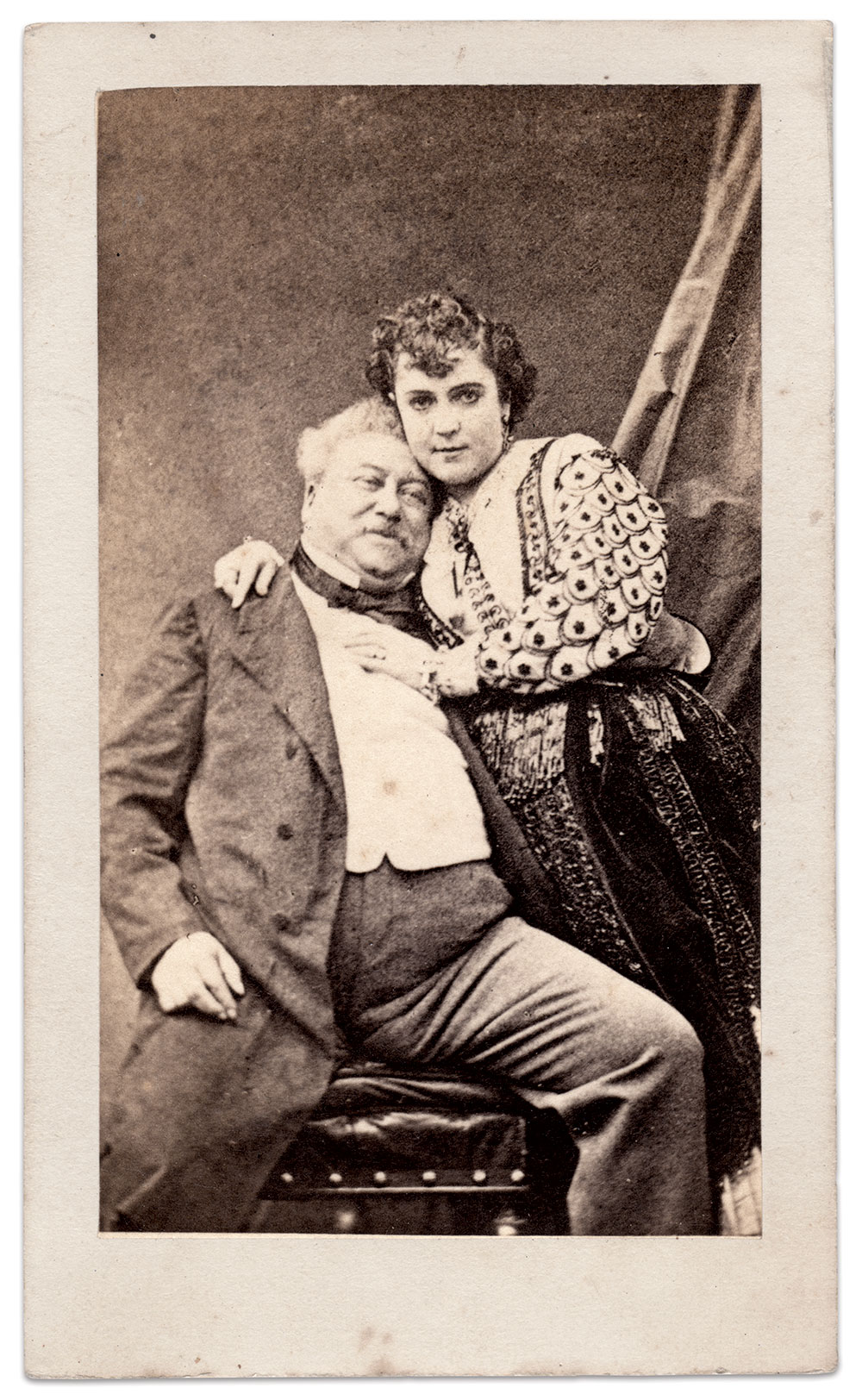By Elizabeth A. Topping, with images from the author’s collection
Actress and poet Adah Isaacs Menken’s extraordinary beauty provided Americans with a pleasant distraction during the Civil War years. Her flamboyant lifestyle and daring display of her shapely figure on stage and in carte de visite portraits made her a sensation—America’s first sex symbol.


Professor Orson S. Fowler, the well-known champion of phrenology and reformist focused on temperance, vegetarianism and sex education, described Menken as having the “perfect female figure” in Science of Life, his guidebook about sexuality and gender.
In 1861, the 26-year-old Menken was given the sobriquet “The Naked Lady” for her performance in “Mazzeppa,” a play based on a Lord Byron poem about a 17th century military leader of Ukraine. Menken, in the role of the Prince, wore flesh colored silk tights and a wispy dimity that gave the illusion that she was naked. The finale had her strapped to a mare that galloped through the aisles, up a stage built out over the audience’s heads surrounded by lightning and thunder and over a four-story, man-made mountain. To ensure her share of a large box office stake, she created the concept of advanced sales.
Mystique cloaked her personal life. Vague about her birth and heritage, most sources agree that she was born in the South and spent her formative years in New Orleans. She married and left five husbands. Her sexual preferences varied as she took lovers of both genders who were famous writers, poets, musicians and artists—the Bohemians of New York and Paris. Her scandalous behavior landed on newspaper front pages, and cemented her distinction as the world’s most famous, highly paid actress.

Menken inserted herself into the literary circle of which she desperately desired to be a part. She dedicated her book of poetry, Infelicia, to Charles Dickens. She encouraged young artists to pursue their craft and supported them financially.
Her greatest role— sex symbol—became her legacy when, at age 33 in 1868, this femme fatale died in Paris. With her sudden and unexpected death at the height of her fame, and without family to claim her remains, Paris officials buried Menken in a pauper’s grave in the Pere Lachaise Cemetery. The following year her manager, Edwin James, received permission to move her body to the Jewish Section of the Montparnasse Cemetery in Paris.
Friends raised the money for a monument, which was inscribed with “Thou Knowest.” In the end, they became Menken’s champions.
SPREAD THE WORD: We encourage you to share this story on social media and elsewhere to educate and raise awareness. If you wish to use any image on this page for another purpose, please request permission.
LEARN MORE about Military Images, America’s only magazine dedicated to showcasing, interpreting and preserving Civil War portrait photography.
VISIT OUR STORE to subscribe, renew a subscription, and more.

